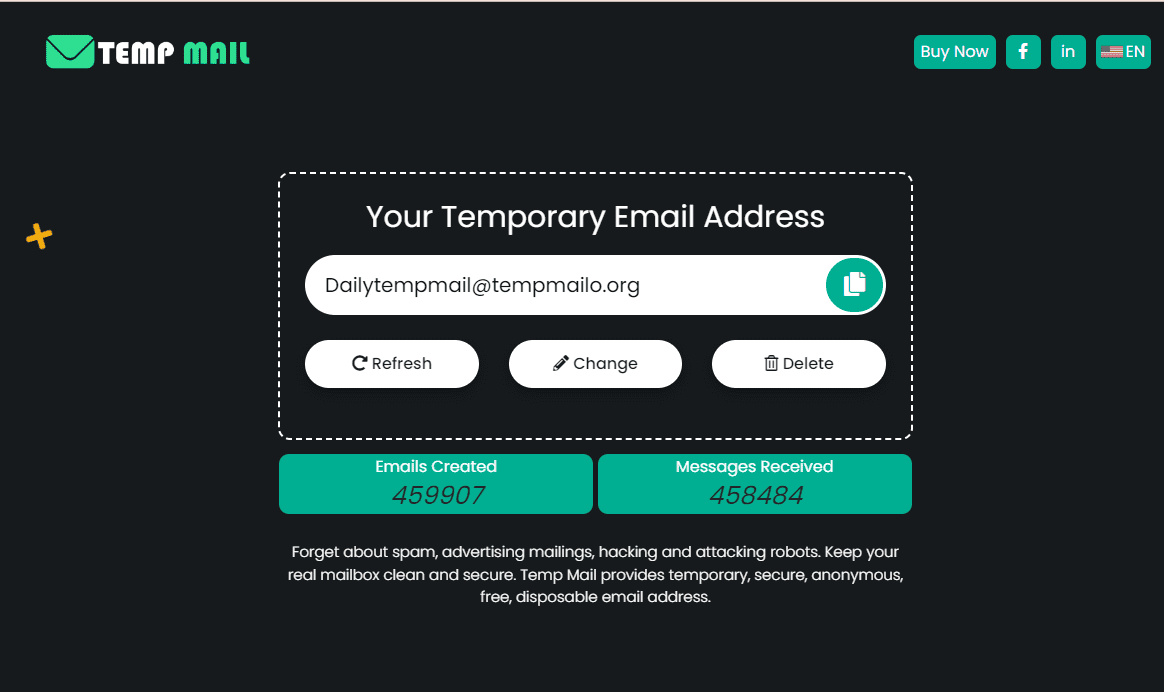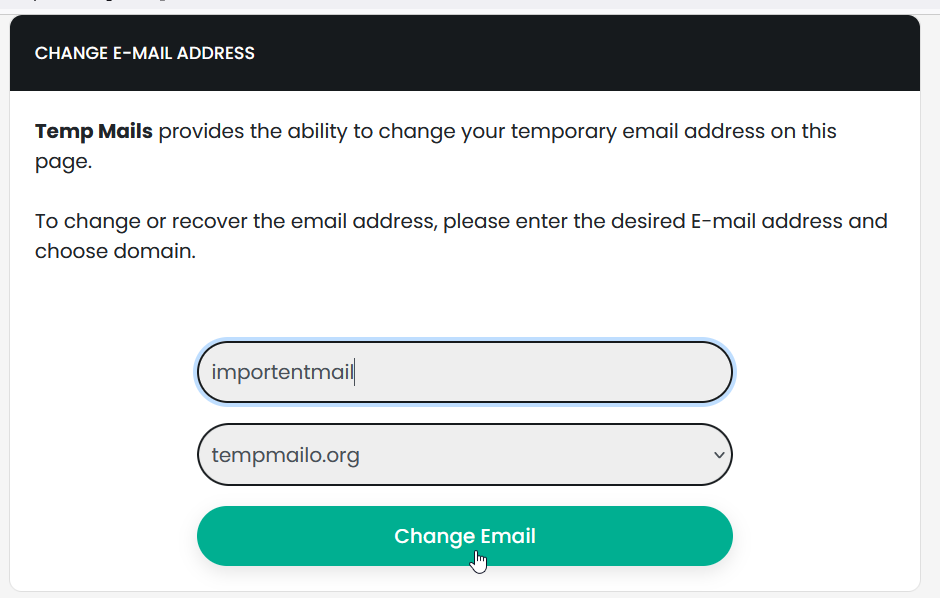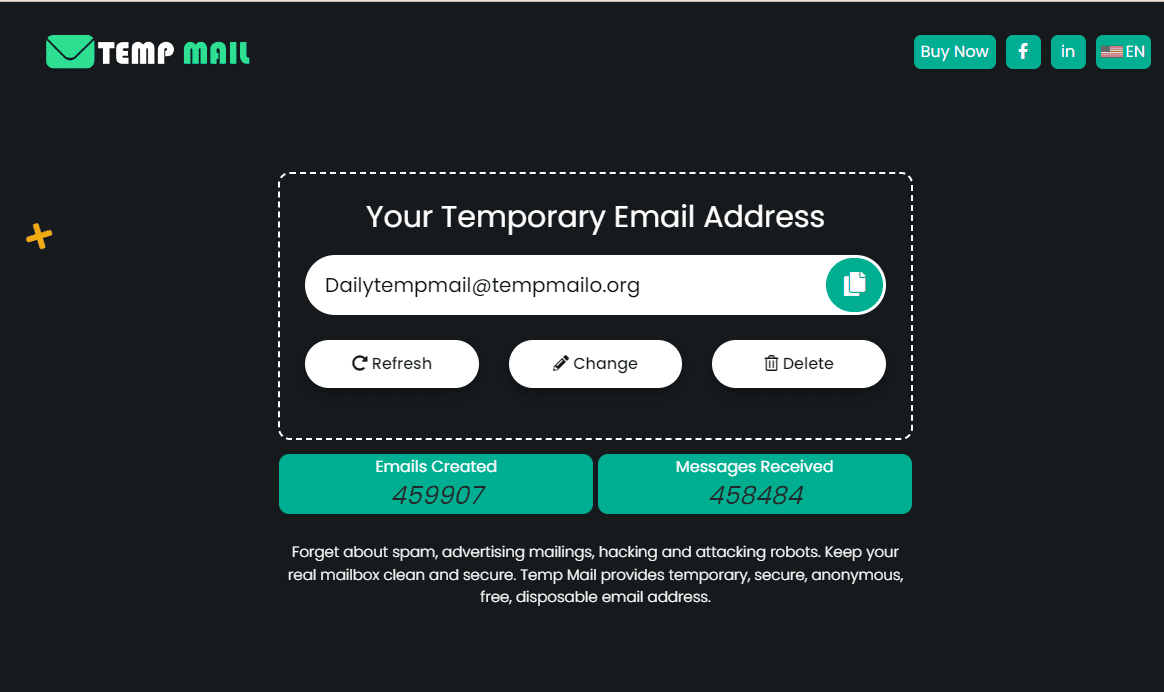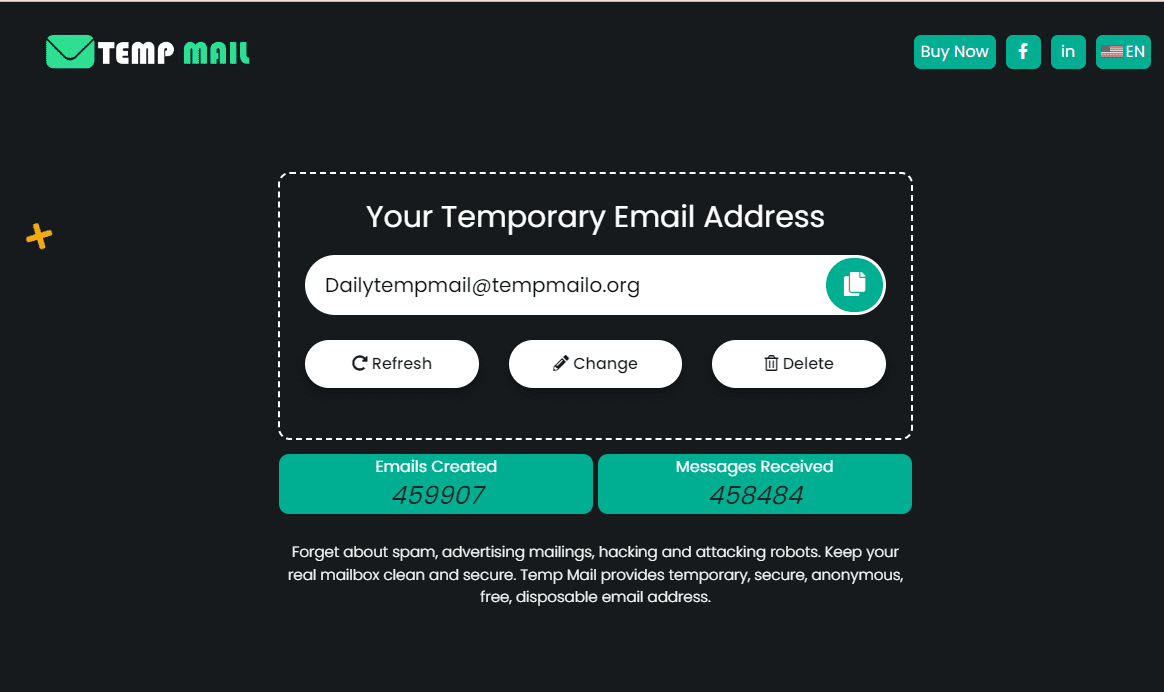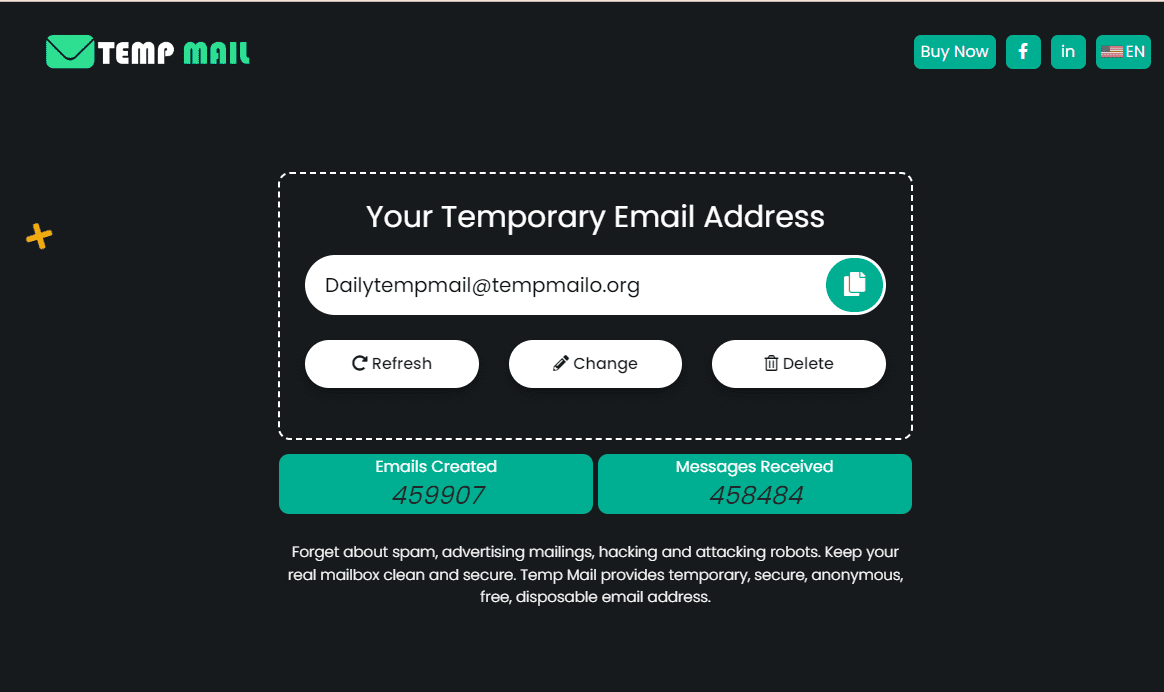A temporary email is a disposable email address created for short-term use. It's a quick, anonymous solution for situations where sharing your primary email might lead to unwanted spam or privacy concerns. Whether you're signing up for a website, downloading an eBook, or participating in a forum, a temporary email keeps your inbox clutter-free and your identity safe.
People often wonder, "How long does a temporary email last?" The answer varies depending on the service provider and the specific needs of the user. Understanding the typical lifespan of these emails is essential to ensure they serve their purpose without unexpected expiration. Let's explore how long you can rely on a temporary email address.
What is a Temporary Email?
A temporary email is a short-term email address designed for temporary use. Unlike your primary email, it doesn’t require a personal connection and often lasts only a few minutes to a few hours. Temporary emails are commonly used when signing up for online services, downloading files, or participating in forums where privacy is a concern.
The primary benefit of using a temporary email is the protection it offers against spam and unwanted messages. By using a disposable email, you can keep your personal inbox clean and secure while still accessing the content or services you need. It's a simple yet effective tool for maintaining online privacy.
Typical Lifespan of a Temporary Email
The lifespan of a temporary email varies widely depending on the service provider and the specific needs of the user. Typically, these emails are designed to be short-lived, offering just enough time for users to complete a specific task, such as signing up for a service or verifying an account.
Short-Lived Temporary Emails (10 Minutes to 1 Hour):
Many temporary email services provide addresses that last only 10 minutes to an hour. These are ideal for quick tasks, such as downloading an eBook, accessing a discount code, or registering for a one-time event. Services like 10 Minute Mail are well-known for offering such brief lifespans. The short duration ensures that the email is automatically deleted, reducing the risk of unwanted spam.
Medium-Term Temporary Emails (1 to 24 Hours):
Some services extend the lifespan to a few hours or even up to a full day. This is useful if you need slightly more time to complete a registration or if you anticipate needing access to the email for a follow-up. Services like Guerrilla Mail offer this kind of flexibility, where the email remains active for around 60 minutes, but you can refresh the timer if needed.
Longer-Term Temporary Emails (Days to Weeks):
For those who need a temporary email that lasts longer, some providers offer options that extend the lifespan to several days or even weeks. This can be beneficial for ongoing projects or situations where you need a temporary inbox for an extended period. However, these are less common, as the primary purpose of temporary emails is to provide short-term, disposable solutions.
Service Provider Differences:
The lifespan of a temporary email is heavily influenced by the service provider's policies. Some providers allow you to extend the lifespan manually, while others delete the email address and all associated data automatically after the set time. It's crucial to choose a service that aligns with your specific needs, ensuring the temporary email lasts long enough to serve its intended purpose without interruption.
Factors That Influence the Lifespan
The lifespan of a temporary email is not fixed and can vary significantly based on several key factors. Understanding these factors will help you choose the right service and manage the temporary email according to your needs.
1. Service Provider Policies:
Different temporary email services have their own rules and policies that dictate how long an email address remains active. Some providers offer emails that last only a few minutes, while others might extend the duration to several hours or even days. For instance, services like 10 Minute Mail are designed for extremely short-term use, whereas others, like Guerrilla Mail, may allow for slight extensions depending on user interaction.
2. User Actions:
The lifespan of a temporary email can sometimes be extended based on user actions. Many temporary email services offer a “refresh” or “extend” option that allows you to prolong the life of the email address. This feature is particularly useful if you need more time to complete a task or receive a follow-up email. However, not all providers offer this flexibility, so it's essential to choose a service that matches your specific needs.
3. Purpose of Use:
The intended use of the temporary email can also influence its lifespan. For example, if you're using a temporary email for a one-time download or quick sign-up, a short lifespan of 10 minutes might be sufficient. However, if you need to monitor an account or service for a longer period, you'll want a temporary email that lasts for several hours or even days.
4. Specific Features of the Service:
Some temporary email providers offer additional features, such as inbox storage limits, automatic deletion after a certain period of inactivity, or the ability to create multiple addresses. These features can also impact how long the email remains accessible.
By considering these factors, you can choose a temporary email service that perfectly aligns with your requirements, ensuring you have access to the email for as long as you need it.
What Happens After the Email Expires?
1. Automatic Deletion of the Email Address:
The most common outcome after a temporary email expires is the automatic deletion of the email address. Once the set lifespan of the email is reached, the address becomes inactive and can no longer receive or send messages. This means that any attempts to use the expired email for communication will fail, and senders will likely receive a bounce-back notification indicating that the address is no longer valid.
2. Deletion of Email Content:
Along with the email address, the contents of the temporary email inbox are usually deleted as well. This includes all received messages, attachments, and any data associated with the temporary email. The deletion is often irreversible, meaning that once the emails are gone, they cannot be recovered. This process ensures that any sensitive information remains private and reduces the risk of data breaches.
3. Impact on Ongoing Communications:
If you were using the temporary email for ongoing communications, such as verifying accounts, receiving newsletters, or corresponding with a service provider, the expiration of the email can disrupt these activities. Any emails sent to the expired address after its deletion will not reach you. Therefore, it’s crucial to complete any necessary tasks before the email expires or consider extending its lifespan if the service allows.
4. Recycling of the Email Address:
In some cases, the email address may be recycled and made available for other users after a certain period. This means that a new user might receive the same email address after it has been inactive for a while. However, any data associated with the previous user is typically wiped clean to ensure privacy.
Can You Extend the Lifespan of a Temporary Email?
The ability to extend the lifespan of a temporary email depends largely on the service provider you choose. While many temporary email services are designed to be short-lived, some do offer options to prolong the email's duration, giving you more time to complete your tasks.
1. Services That Offer Extensions:
Certain temporary email providers allow users to extend the lifespan of their email addresses. This feature is often available through a simple “refresh” or “extend” button on the service’s interface. For example, Guerrilla Mail and similar platforms let you renew the email for additional time, ensuring you have continuous access without the risk of premature expiration.
2. Limitations of Extensions:
Even when an extension is possible, it typically comes with limitations. Some services may only allow you to extend the lifespan once or twice, while others might cap the total time the email can remain active. This ensures that the email stays true to its purpose of being temporary while still offering some flexibility for users who need it.
3. Alternatives to Extending:
If the service you’re using doesn’t offer an extension option, you might need to create a new temporary email address. Some platforms allow you to generate a new address quickly, which can be a simple workaround if you need continued access beyond the initial expiration time. However, this method requires updating any services or contacts to the new email address.
4. When to Consider a More Permanent Solution:
If you find yourself frequently needing to extend the lifespan of temporary emails, it might be worth considering a more permanent privacy-focused email solution. These services offer the anonymity of temporary emails but with more control over the lifespan and functionality, making them ideal for ongoing projects or longer-term needs.
Alternatives to Temporary Emails
While temporary emails offer a quick and disposable way to manage online communications, they aren't always the best fit for every situation. If you need more control or extended use, several alternatives can provide similar privacy benefits with added features. Here’s a look at some options, including Tempemailo.
1. Tempemailo:
Tempemailo is a versatile alternative that provides both temporary and more persistent email solutions. It allows you to create disposable emails that last as long as you need, offering the flexibility to manage online activities without sacrificing privacy. Tempemailo is particularly useful for users who require temporary addresses with the option to extend their lifespan or manage multiple addresses simultaneously.
2. Alias Emails:
Alias emails are another effective alternative to temporary emails. Services like AnonAddy or SimpleLogin allow you to create multiple email aliases that forward messages to your primary inbox. These aliases can be easily deleted or deactivated if they start receiving spam, providing a layer of protection while maintaining long-term use.
3. Privacy-Focused Permanent Emails:
For those who need a more permanent solution without compromising on privacy, using a privacy-focused email provider like ProtonMail or Tutanota might be ideal. These services offer end-to-end encryption and anonymous sign-up options, ensuring your communications remain secure. They also provide the ability to create multiple email addresses under one account, similar to the alias email approach.
4. Burner Emails:
Burner emails, similar to temporary emails, are designed for short-term use but often come with more features, such as the ability to reply or forward messages. Services like Burner Mail allow you to create and manage multiple burner addresses that can be discarded when no longer needed.
Conclusion
In conclusion, temporary emails offer a quick and effective way to protect your privacy online, with lifespans varying from minutes to days depending on the service provider. We discussed how factors like service policies, user actions, and specific needs influence the duration of these emails.
When choosing a temporary email service, it's essential to consider how long you'll need the address and whether the option to extend its lifespan is available. By selecting a service that aligns with your requirements, you can ensure that the temporary email lasts long enough to fulfill its purpose without unexpected expiration.
Frequently Asked Questions
1. How long does a temporary email last?
The lifespan of a temporary email can vary from a few minutes to several days, depending on the service provider. Most services offer emails that last between 10 minutes and 24 hours, with some allowing extensions.
2. Can I extend the lifespan of a temporary email?
Yes, some temporary email services allow you to extend the lifespan of the email address by refreshing or renewing it. However, this feature is not available with all providers, so it's essential to choose a service that offers this option if needed.
3. What happens to my emails after the temporary email expires?
Once a temporary email expires, both the email address and any received messages are usually deleted permanently. This means you will no longer have access to the inbox, and any new messages sent to the address will bounce back.
4. Is it safe to use a temporary email for important communications?
Temporary emails are best suited for short-term, less critical tasks, such as signing up for newsletters or downloading content. They are not recommended for important communications that require ongoing access, as the email address will eventually expire.
5. What are some alternatives to using a temporary email?
Alternatives to temporary emails include alias emails, privacy-focused permanent emails, and burner emails. These options offer more control and extended use while still providing privacy and security. Services like Tempemailo and ProtonMail are good examples of such alternatives.
